Bombardier Beetle
- April 9, 2024
- 0 comment
The Bombardier beetle, a fascinating insect found across various ecosystems worldwide, boasts a unique defense mechanism that sets it apart from its counterparts. Sporting a robust exoskeleton and an elongated body, these beetles are renowned for their ability to fend off predators using a potent chemical spray emitted from their abdomens when threatened. This defensive tactic involves the mixing of two chemical compounds, hydroquinone and hydrogen peroxide, resulting in a boiling, noxious concoction expelled with remarkable accuracy and force. This remarkable adaptation has intrigued scientists and nature enthusiasts alike, leading to extensive research into the evolutionary origins and ecological significance of this extraordinary ability.
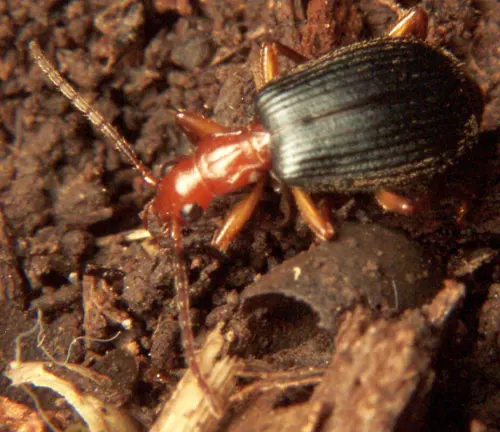
Despite their small size, Bombardier beetles play a vital role in their respective habitats, highlighting the intricate interplay between organisms and their environments. As we continue to unravel the mysteries of these remarkable creatures, we gain valuable insights into the wonders of the natural world and the remarkable adaptations that enable survival in diverse and challenging environments.
| Specifications | Description |
|---|---|
| Scientific Name | Brachinus or Pheropsophus |
| Size | Varies by species; typically ranges from 1 to 2 centimeters in length |
| Body Structure | Robust exoskeleton, elongated body |
| Coloration | Varies among species, often exhibiting metallic hues or earthy tones |
| Defense Mechanism | Chemical spray expelled from the abdomen when threatened |
| Chemical Composition | Hydroquinone and hydrogen peroxide mixture undergoes a chemical reaction, producing a noxious spray |
| Temperature of Spray | Can reach nearly 100 degrees Celsius, scalding potential predators |
| Habitat | Found in various ecosystems, including forests, grasslands, and deserts |
| Distribution | Global distribution, with different species exhibiting preferences for specific environments |
| Predators | Predatory birds, frogs, small mammals, and other insects |
| Symbiotic Relationships | Forms symbiotic relationships with certain creatures, such as the pseudoscorpion |
| Research Interest | Subject of extensive scientific research to understand the mechanism and implications of its chemical defense |
| Conservation Status | Faces threats from habitat destruction, pollution, and climate change |
| Cultural Significance | Features in folklore, literature, and art as a symbol of resilience and ingenuity |
Bombardier Beetle: Nature’s Chemical Weapon
The Bombardier beetle, scientifically known as Brachinus or Pheropsophus, is one of nature’s most fascinating creatures. Renowned for its unique defense mechanism, this beetle has captured the curiosity of scientists and nature enthusiasts alike.
Anatomy of the Bombardier Beetle
Body Structure
The Bombardier beetle boasts a distinctive body structure characterized by a robust exoskeleton and an elongated shape. These beetles typically range in size from 1 to 2 centimeters in length, although specific species may vary. Their exoskeleton, composed of chitin, provides protection and support, allowing them to withstand various environmental conditions. The body of the Bombardier beetle is divided into three main segments: the head, thorax, and abdomen.

The head houses sensory organs, including antennae and compound eyes, while the thorax contains powerful muscles used for locomotion. The abdomen, where the chemical defense mechanism is located, is elongated and flexible, enabling the beetle to aim and spray its defensive chemicals with precision.
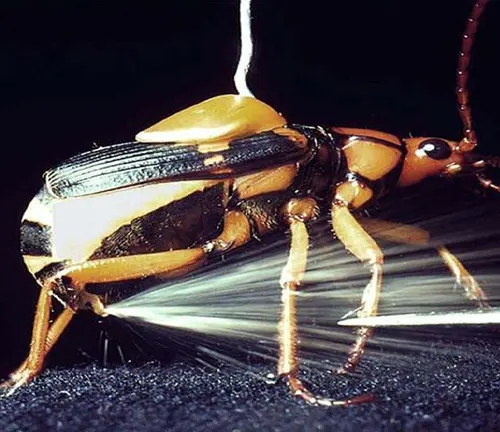
Defense Mechanisms
The most remarkable aspect of the Bombardier beetle’s biology is its potent chemical defense mechanism. When threatened by predators, the Bombardier beetle activates this mechanism to deter potential attackers. The process begins with the beetle combining two chemical compounds stored in separate glands within its abdomen: hydroquinone and hydrogen peroxide. When these chemicals mix, they undergo a rapid exothermic reaction, generating heat and pressure. The resulting chemical spray is expelled forcefully from the beetle’s abdomen through specialized openings called pygidial glands.
This spray can reach temperatures close to 100 degrees Celsius and is accompanied by a loud popping sound, further deterring predators. The noxious chemicals in the spray, combined with its heat and force, effectively discourage most predators from further pursuit. This remarkable defense mechanism has evolved over millions of years, providing the Bombardier beetle with a powerful tool for survival in a world full of potential threats.
Chemical Warfare: How the Bombardier Beetle Defends Itself
Ejection Mechanism
The ejection mechanism of the Bombardier beetle is a marvel of biological engineering. When the beetle senses a threat, it initiates a rapid and precise process to deploy its defensive arsenal. The key to this mechanism lies in specialized structures within the beetle’s abdomen known as pygidial glands. These glands contain reservoirs of two separate chemical compounds: hydroquinone and hydrogen peroxide. When the beetle perceives danger, muscles surrounding the glands contract, forcing the two chemicals into a mixing chamber. Within this chamber, the hydroquinone and hydrogen peroxide react violently, producing a rapid release of heat and pressure.
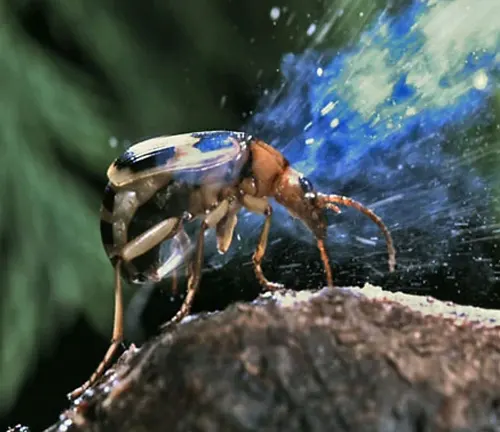
This buildup of energy propels the resulting chemical spray out of the beetle’s body through a nozzle-like structure, aimed directly at the perceived threat. The entire process occurs within milliseconds, allowing the Bombardier beetle to effectively defend itself against predators with astonishing speed and accuracy.
Chemical Composition
The chemical composition of the Bombardier beetle’s defensive spray is a potent cocktail designed to deter and incapacitate potential attackers. The two primary components of the spray are hydroquinone and hydrogen peroxide, which are stored separately within the beetle’s pygidial glands. When these chemicals are mixed and undergo a rapid exothermic reaction, they produce a hot, noxious liquid that is expelled forcefully from the beetle’s abdomen. The exact proportions of hydroquinone and hydrogen peroxide can vary between species of Bombardier beetles, as well as within individuals of the same species.
In addition to these primary components, the spray may also contain secondary compounds and enzymes that enhance its effectiveness. The resulting chemical concoction is capable of reaching temperatures close to 100 degrees Celsius and can cause irritation or even injury to potential predators. Overall, the chemical composition of the Bombardier beetle’s defensive spray represents a remarkable adaptation honed through millions of years of evolutionary refinement.
Evolutionary Advantages of Chemical Defense
The Bombardier beetle’s chemical defense mechanism provides it with several significant evolutionary advantages that contribute to its survival and reproductive success.
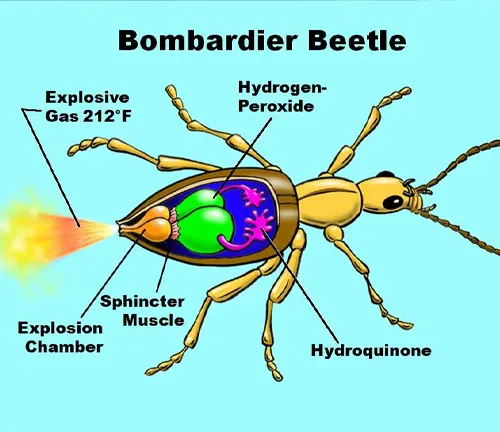
- Predator Deterrence: The primary function of the chemical defense is to deter predators. By emitting a hot and noxious spray, the Bombardier beetle effectively repels potential threats, including birds, amphibians, and other insects. This defense mechanism acts as a powerful deterrent, reducing the likelihood of predation and increasing the beetle’s chances of survival.
- Selective Pressure: The presence of a potent chemical defense system imposes selective pressure on predators. Individuals that are sensitive or susceptible to the beetle’s defensive spray are less likely to survive and reproduce. Over time, this selective pressure can drive evolutionary changes in predator populations, favoring those with adaptations or behaviors that reduce their vulnerability to the beetle’s defense.
- Resource Allocation: The ability to produce and deploy chemical defenses requires energy and resources. Bombardier beetles invest significant resources into maintaining their defensive mechanisms, including the synthesis of defensive chemicals and the development of specialized anatomical structures. The allocation of resources to chemical defense reflects the evolutionary trade-offs between investing in defense and other aspects of fitness, such as reproduction and growth.
- Species Diversification: The evolution of chemical defense has contributed to the diversification and speciation of Bombardier beetle species. Variation in the composition and effectiveness of defensive chemicals can drive ecological differentiation and niche specialization among different species. This diversification enables Bombardier beetles to exploit a wide range of habitats and ecological niches, increasing their overall resilience and adaptive capacity.
- Intraspecific Communication: Chemical defenses may also play a role in intraspecific communication and social behavior within Bombardier beetle populations. The production and release of defensive chemicals could convey information about an individual’s health, vigor, or genetic quality to potential mates or competitors. This communication function may influence mate choice, territorial behavior, and other aspects of reproductive success.
Habitat and Distribution
Bombardier beetles are found in a variety of habitats worldwide, showcasing their adaptability to different environmental conditions. Their distribution spans across diverse ecosystems, ranging from temperate forests to arid deserts.
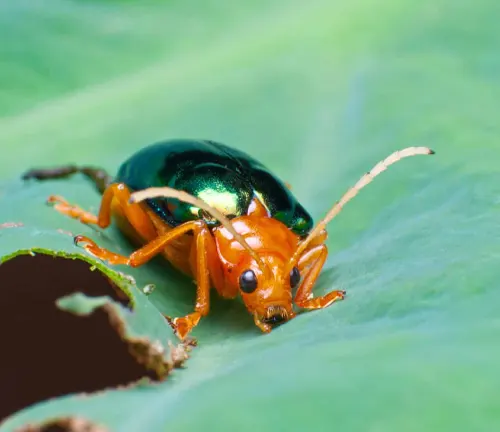

- Forests and Woodlands: Bombardier beetles thrive in forested areas, where they inhabit leaf litter, fallen logs, and other organic matter. These habitats provide ample shelter and food sources, allowing the beetles to forage and reproduce.
- Grasslands and Meadows: Some species of Bombardier beetles are commonly found in grasslands and meadows. They inhabit open fields, prairies, and agricultural landscapes, where they feed on small insects and other invertebrates.
- Deserts and Arid Regions: Certain species of Bombardier beetles have adapted to arid environments, including deserts and semi-arid regions. Despite the harsh conditions, these beetles have developed mechanisms to survive in hot and dry climates.
- Wetlands and Riparian Areas: In wetland habitats such as marshes, swamps, and riparian zones, Bombardier beetles can be found near water sources. These areas provide moisture and organic material, creating suitable conditions for beetle populations.
- Urban and Human-Altered Landscapes: Bombardier beetles are also present in urban and human-altered environments. They may inhabit parks, gardens, and agricultural fields, adapting to anthropogenic changes in their surroundings.
- Global Distribution: Bombardier beetles have a widespread distribution, inhabiting every continent except Antarctica. While specific species may have localized distributions or habitat preferences, they can be found in diverse ecosystems worldwide.
Interactions with Other Species
Predators
Bombardier beetles are preyed upon by a range of predators, including birds, amphibians, reptiles, and other insects. Their chemical defense mechanism serves as a deterrent against many of these predators, although some species may have adaptations or behaviors that allow them to tolerate or avoid the beetle’s defensive spray.
Prey
As predators themselves, Bombardier beetles feed on small insects and invertebrates, contributing to the regulation of populations within their ecosystems. They play a role in controlling herbivorous insect populations, which can have cascading effects on plant communities.
Symbiotic Relationships
Bombardier beetles engage in symbiotic relationships with certain organisms, such as pseudoscorpions. Pseudoscorpions hitch rides on Bombardier beetles, gaining protection from predators while providing no obvious benefit to the beetles.
Research and Studies on Bombardier Beetles
Chemical Defense Mechanism
Researchers have studied the chemical composition and mechanism of the Bombardier beetle’s defensive spray, seeking to understand how it is produced, stored, and deployed. This research has revealed insights into the biochemistry and evolution of chemical defense systems in insects.
Ecological Interactions
Studies have investigated the ecological role of Bombardier beetles within their ecosystems, examining their interactions with predators, prey, and other organisms. This research helps elucidate the broader ecological implications of the beetle’s presence and behavior.
Evolutionary Biology
Researchers have explored the evolutionary history of Bombardier beetles, seeking to understand how their chemical defense mechanism evolved and diversified across different species. Comparative studies of beetle morphology, behavior, and genetics shed light on the evolutionary processes driving adaptation and speciation.
Conservation Status and Threats
Habitat Loss
Destruction and degradation of natural habitats, such as forests, wetlands, and grasslands, can impact Bombardier beetle populations by reducing available food sources and shelter.
Pollution
Pesticides and other chemical pollutants can negatively affect Bombardier beetles and their habitats, disrupting their ecological balance and potentially harming their health and reproductive success.
Climate Change
Shifts in climate patterns, such as increased temperatures or altered precipitation regimes, may impact Bombardier beetle populations by influencing their habitat suitability and distribution.
Different Species
Brachinus crepitans
Commonly known as the common bombardier beetle, this species is found in various regions of Europe and North America. It is known for its ability to emit a powerful chemical spray when threatened.
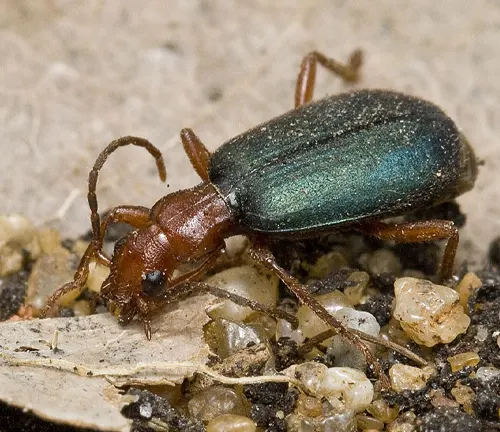
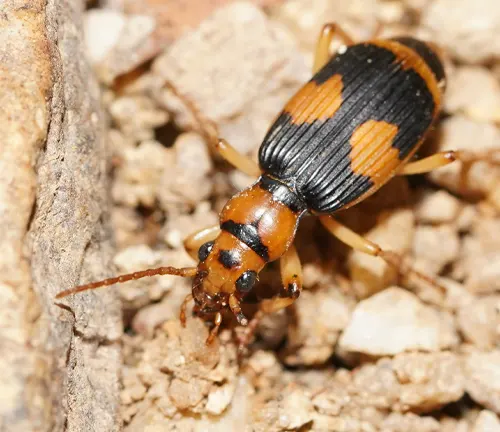
Pheropsophus verticalis
Found predominantly in South America, Pheropsophus verticalis is a species of Bombardier beetle known for its distinctive coloration and robust body structure.
Pheropsophus aequinoctialis
Native to tropical regions of South America, this species of Bombardier beetle is characterized by its metallic blue or green coloration and is often found in humid habitats.
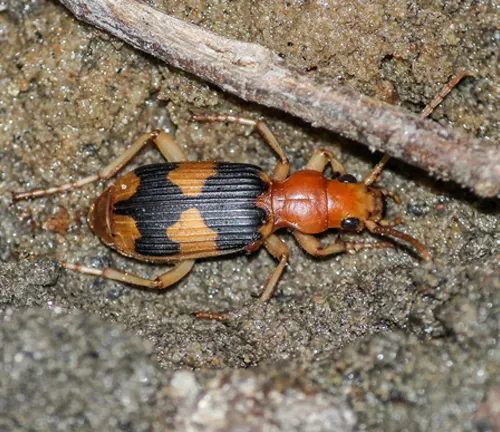
Frequently Asked Questions (FAQs)
- What is the purpose of the Bombardier beetle’s chemical spray?
The chemical spray serves as a defense mechanism to deter predators and protect the beetle from harm. - How far can a Bombardier beetle spray its chemical defense?
The range of the chemical spray varies depending on the species of Bombardier beetle, but it can typically reach a few centimeters to several inches. - Are there any predators immune to the Bombardier beetle’s chemical spray?
While the chemical spray is effective against many predators, some species, such as certain birds and insects, have developed resistance or avoidance strategies. - Can Bombardier beetles regenerate their chemical supply?
Yes, Bombardier beetles can replenish their chemical supply over time, allowing them to deploy their defensive mechanism repeatedly. - Do Bombardier beetles exhibit any warning signals before spraying their chemicals?
Yes, Bombardier beetles often display warning behaviors, such as raising their abdomen or emitting audible noises, to signal their readiness to spray. - How do Bombardier beetles mate and reproduce?
Bombardier beetles typically mate during the warmer months, with males using pheromones to attract females. After mating, females lay eggs in the soil or other suitable substrates. - Are there any known predators that specifically prey on Bombardier beetles?
While Bombardier beetles have developed effective defenses against many predators, some specialized predators, such as certain spider species, may still prey on them. - Can Bombardier beetles fly?
Yes, most species of Bombardier beetles are capable of flight, allowing them to disperse to new habitats and evade predators more effectively. - Do Bombardier beetles have any natural enemies that exploit their chemical defense for their own benefit?
Yes, certain creatures, such as the pseudoscorpion, have formed symbiotic relationships with Bombardier beetles, utilizing their chemical spray for protection. - How long do Bombardier beetles typically live?
The lifespan of Bombardier beetles varies depending on factors such as species, habitat, and environmental conditions, but they generally live for several months to a year as adults.


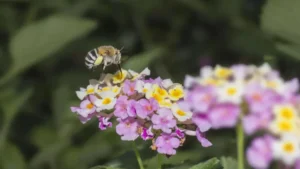
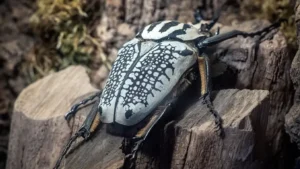



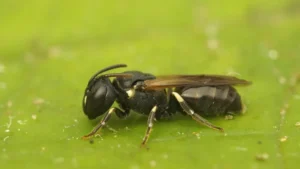
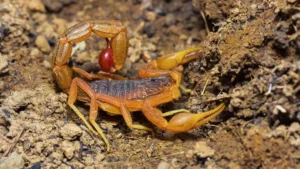

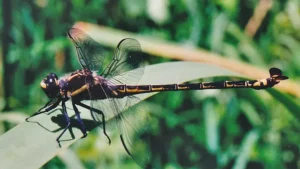

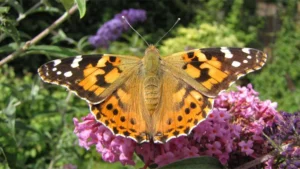

Leave your comment